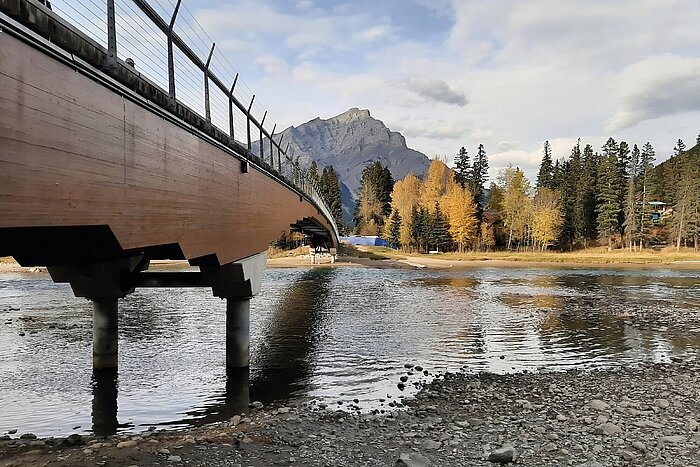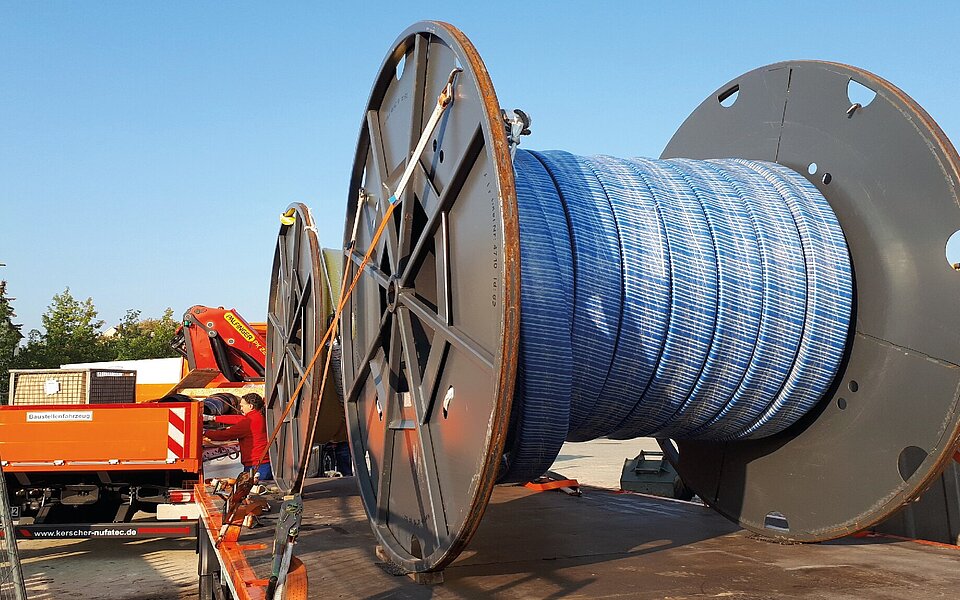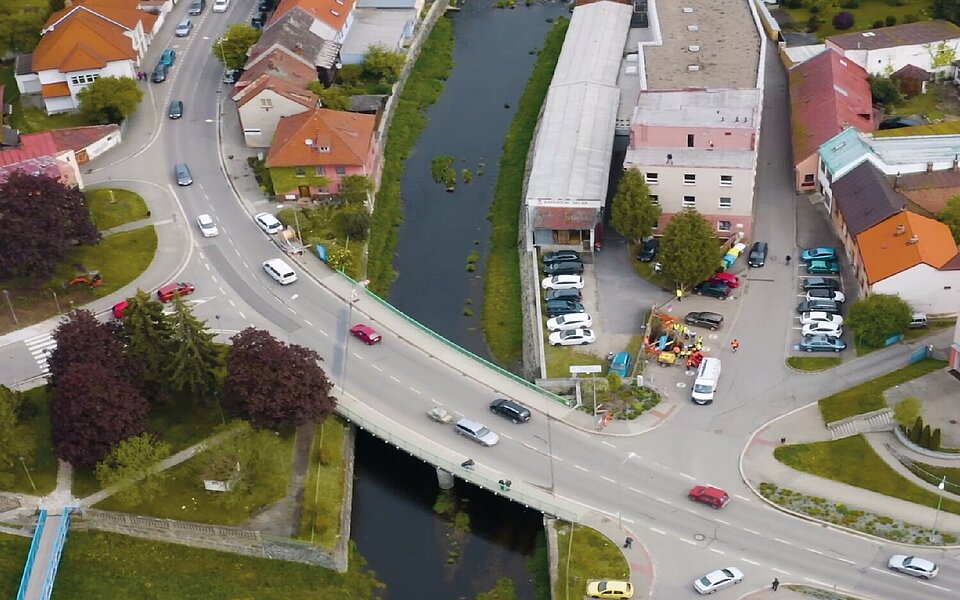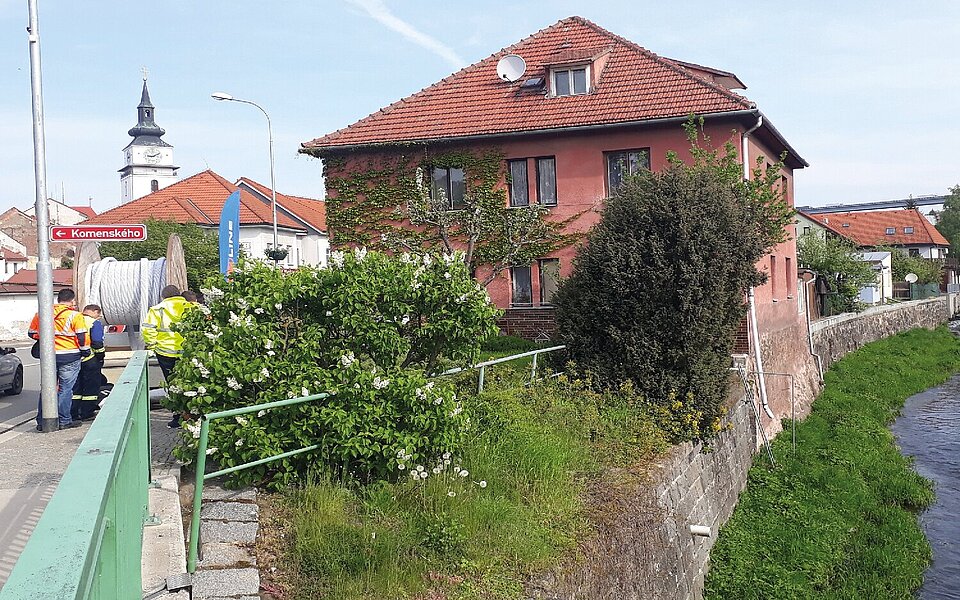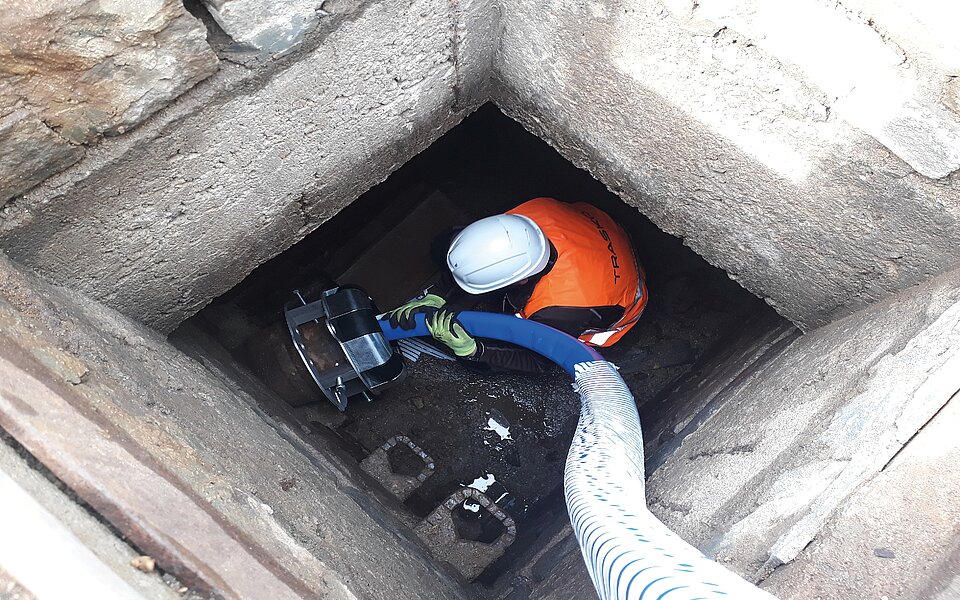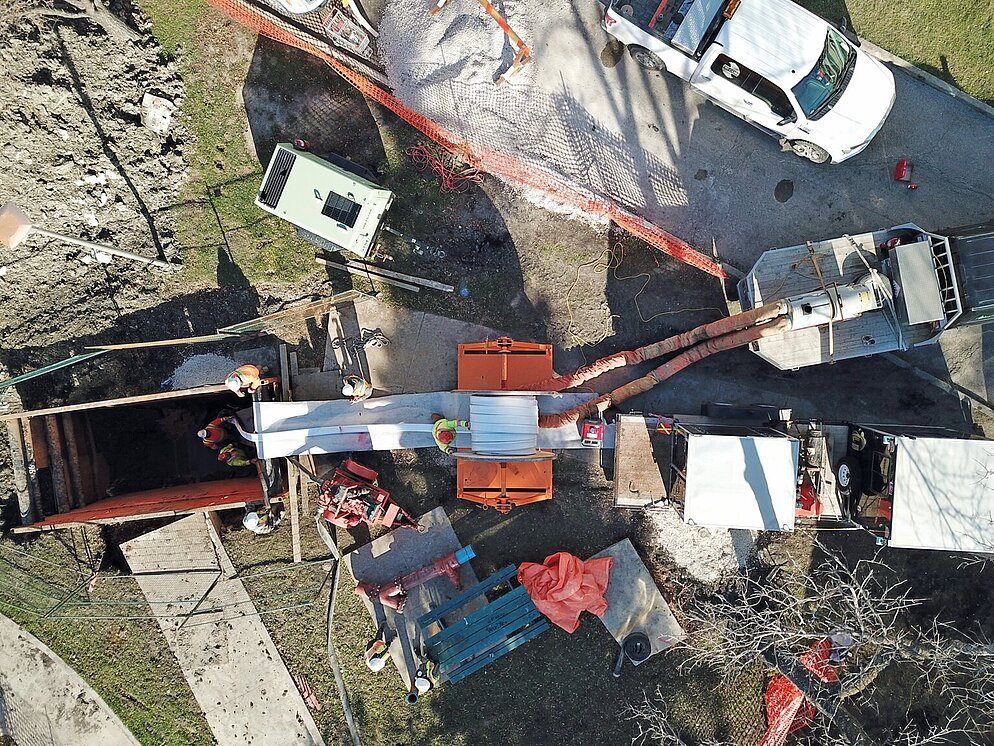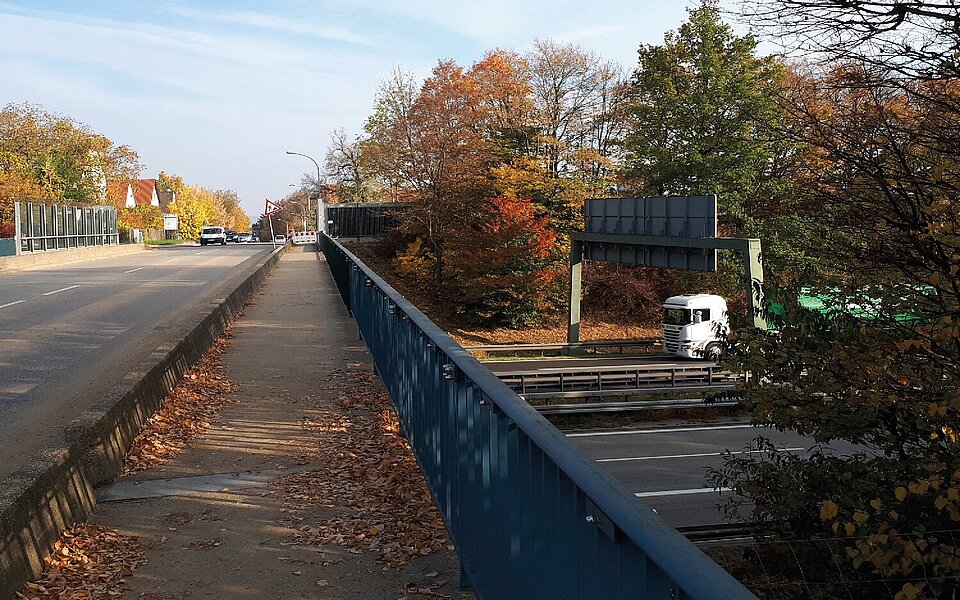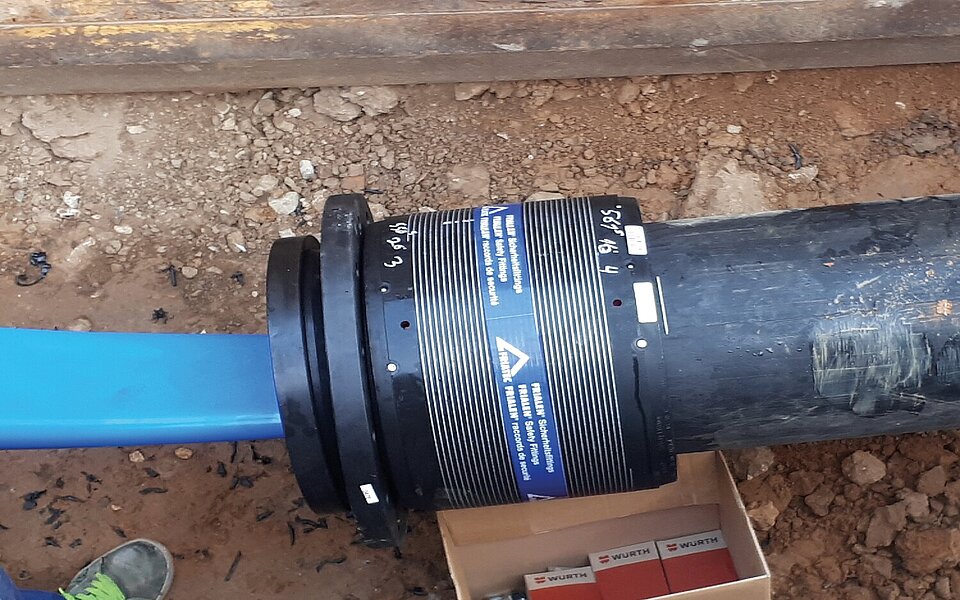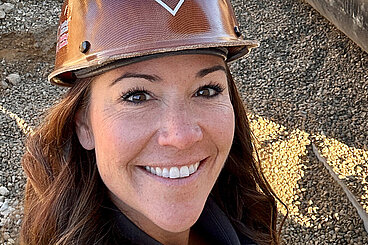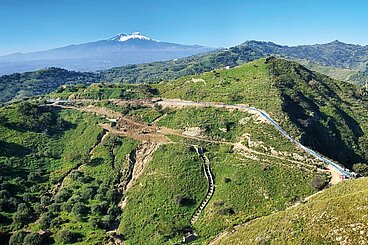They run under roads, railway tracks, rivers or lakes: pressure pipes that transport various liquids under these ‘obstacles’. These pressure pipes, known as inverted siphons, are often characterised by long lengths and a U-shape with curved fittings built into their course. In addition, they are only accessible to a limited extent, for example from the banks of a body of water or next to the track bed. Many trenchless rehabilitation methods reach their limits here. New construction is time-consuming and cost-intensive and is often associated with geotechnical and hydrogeological problems as well as construction risks.
Advantages of Primus Line® Rehab
Primus Line® Rehab, the technology for trenchless rehabilitation of pressurised pipelines, is both strong and flexible. Why is that? These properties result from the multi-layer liner structure in combination with the specially developed connectors.
The liner consists of three layers. The inner layer is tailored to the medium to be transported: it is made of either polyethylene (PE) or thermoplastic polyurethane (TPU) with high chemical, abrasion and corrosion resistance. The middle layer is a seamlessly woven Kevlar® fabric. It fully absorbs the operating pressure and is up to ten times stronger than steel of the same weight. This layer in particular provides the necessary stability, but also the required flexibility when travelling through bends. The outer layer of Primus Line® Rehab made of polyethylene (PE) protects the fabric from abrasion during insertion and operation.
Insertion lengths of up to 8,200 feet, a bendability – depending on the application – of up to 90 degrees and low machine employment make the rehabilitation of ageing pipes with Primus Line® Rehab quick and easy. This makes the system particularly suitable for environments with high geographical, economic, architectural or ecological requirements. For inverted siphons, for example.
Whether under rivers, lakes, railway tracks or motorways: Inverted siphon rehabilitation with Primus Line® Rehab requires minimal space, which significantly reduces construction activity and therefore the impact on the surrounding area. The liner is pulled in using a cable winch at a speed of up to ten metres per minute. For transport, the flexible pipe is folded into a U-shape and wound onto special reels. Depending on the diameter, a single reel can hold up to 13,123 feet of pipe, which can be efficiently loaded onto a single truck. This minimises both the logistics costs and the environmental impact associated with transport.
Another positive aspect: a rehabilitation with Primus Line® Rehab extends the service life of the inverted siphon by at least another 50 years.
Primus Line® Rehab has already been used several times for inverted siphon rehabilitation. Three examples from Germany, the Czech Republic and Canada illustrate the different requirements that the technology can fulfil:
